With the escalating frequency of extreme weather events, there is an urgent need to increase awareness about climate change’s anticipated effects, and to expand the pool of those actively seeking viable, long-term adaptation and mitigation strategies. Using educational games can be one such tool to meet this need. The gaming industry is bigger than the music and movie industries combined, promising excellent outreach potential to engage the public with climate change solutions and spread awareness about the tools landscape architecture can offer.
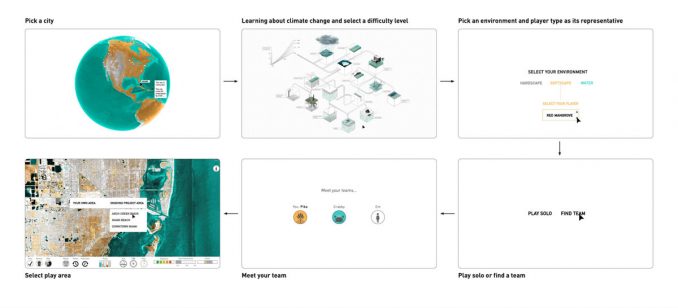
This research project takes the form of a business pitch, using drawings and animations to envision a collaborative video game that would simulate climate threats and mitigation strategies. It proposes Hidden Habitats, a world-building game centered around one key urban ecosystem under threat, the region around Miami. The game invites players to experience Miami’s landscape ecology through the eyes of different avatars, including a mangrove tree, a human, or a crab. Through collaborative play, players understand the impact of decision making at various scales, and the interconnectedness of different species. They work together to view and test possible futures, empowering them to think critically about the state of their urban environments and make more informed decisions about the present and the future.

Players are empowered through a range of habitat manipulation tools to make changes to their environment. They can test the outcomes through a range of modeled metrics, including unique “resilience points” that give a yardstick of the performance of the system, and dynamic maps that show impacts to sea level. These projected local outcomes can be compared against global climate projections, as well as historical maps showing the past state of the ecosystem. Through updates to a common “Marketplace,” players, professional designers, NGOs, and governments can all get the opportunity to share and compare their mitigation design strategies.
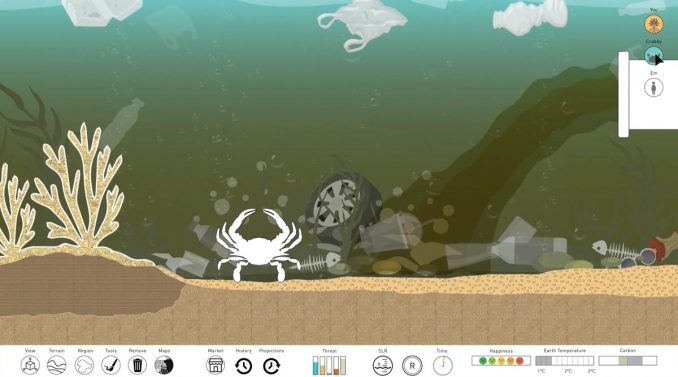
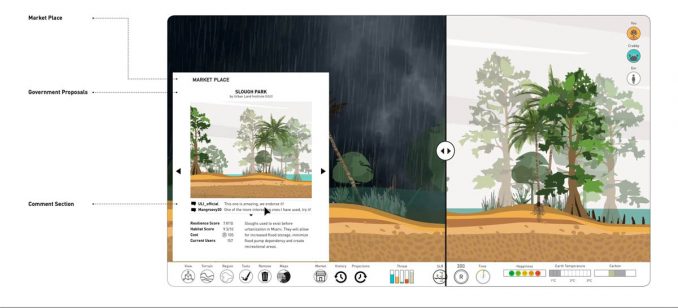
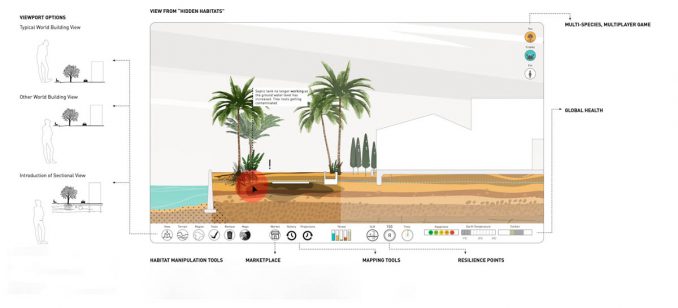
Hidden Habitats sets itself apart from other worldbuilding games not only in its environmental mission, but in its ability to show the ground-level experience of interventions, both to humans and to other environmental actors. A scalable sectional interface makes any alterations to urban form, shoreline footprint, or water quality tangible and emotional. In an environment like Miami’s, where environmental impacts are often hidden or postponed, the ability to simulate and test changes on the fly may be the missing link to get the public engaged both in pressing problems and potential solutions.
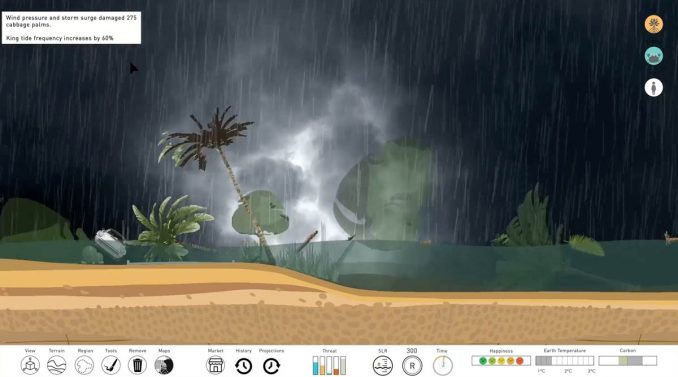
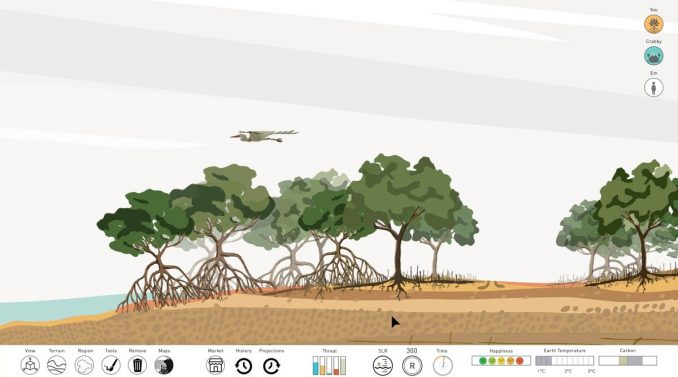
Student Project | Hidden Habitats | Harshat Verma
Student Name: Harshat Verma
School: The Ohio State University
Advisors: Jake Boswell, Kristi Cheramie, Mattijs van Maasakkers
